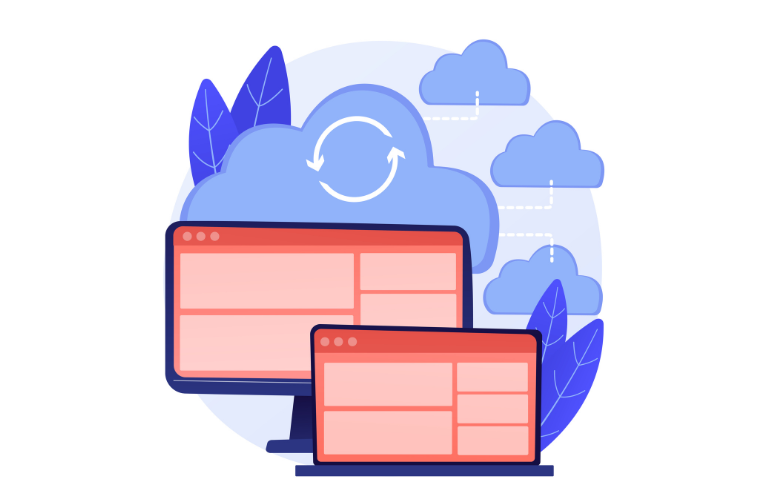The ChatGPT WordPress chatbot is transforming how businesses interact with customers on WordPress sites. Powered by advanced AI, it delivers human-like responses, automates tasks, and boosts user satisfaction. This guide shows you how to create and customize a ChatGPT WordPress chatbot, whether you’re coding from scratch or using no-code tools like Elfsight. We’ll cover setup, use cases, shortcuts, and tips to solve pain points like slow performance, ensuring your chatbot is fast, engaging, and tailored to your brand.
Table of Contents
Why Choose a ChatGPT WordPress Chatbot?
ChatGPT-powered chatbots stand out for their ability to understand natural language and provide context-aware replies. Unlike traditional bots, they adapt to complex queries, making them ideal for WordPress sites. Businesses use them to enhance customer support, generate leads, and streamline operations.
Here’s why a ChatGPT WordPress chatbot is a game-changer:
- Human-like interaction: Delivers natural, engaging conversations.
- Customizable: Tailors tone, style, and functions to your brand.
- Scalable: Handles growing user demands without lag.
- Multilingual: Connects with global audiences effortlessly.
By integrating a ChatGPT WordPress chatbot, you save time and improve user experience, addressing issues like slow response times or generic replies.
Use Cases for a ChatGPT WordPress Chatbot
A ChatGPT WordPress chatbot can serve multiple purposes on your site. Understanding its applications helps you align it with your business goals. Here are key use cases:
- Customer Support: Answer FAQs, troubleshoot issues, and guide users 24/7.
- E-commerce: Recommend products, track orders, and reduce cart abandonment.
- Lead Generation: Capture visitor details and qualify leads with personalized prompts.
- Content Creation: Draft blog ideas or social media posts directly on your site.
For example, an e-commerce store can use a ChatGPT WordPress chatbot to suggest products based on user preferences, increasing sales while reducing manual effort.
No-Code Solution: Elfsight AI Chatbot
Not a coder? Elfsight’s AI Chatbot widget, powered by ChatGPT 4.0 Mini, lets you create a ChatGPT WordPress chatbot without technical skills. It’s user-friendly and integrates seamlessly with WordPress.
Follow these steps to set up Elfsight’s ChatGPT WordPress chatbot:
- Open the Elfsight widget editor and describe your business.
- Customize greetings, behavior, and design to match your brand.
- Copy the embed code and paste it into your WordPress site.
This approach saves time and delivers a professional chatbot in minutes. Elfsight’s features, like multilingual support and chat history, ensure a smooth user experience. Check Elfsight’s guide for detailed setup instructions.
Building a Custom ChatGPT WordPress Chatbot
For developers seeking full control, building a custom ChatGPT WordPress chatbot using OpenAI’s API offers unmatched flexibility. This method requires coding skills but allows deep customization.
Prerequisites
Before starting, ensure you have:
- An OpenAI API key from OpenAI’s platform.
- Python 3.x installed.
- A WordPress site with admin access.
- Basic knowledge of PHP and WordPress plugins.
Step 1: Set Up Your Environment
Prepare your development environment to interact with OpenAI’s API.
- Install Python libraries: Run pip install openai requests in your terminal.
- Set up an IDE like VSCode for coding.
- Store your API key securely as an environment variable: export OPENAI_API_KEY=”your-api-key”.
Step 2: Write the Chatbot Code
Create a simple Python script to connect with OpenAI’s API and handle user inputs. Below is a basic example:
import openai
openai.api_key = "your_openai_api_key"
def chat_with_gpt(prompt):
try:
response = openai.Completion.create(
engine="gpt-3.5-turbo",
prompt=prompt,
max_tokens=150,
temperature=0.7
)
return response.choices[0].text.strip()
except Exception as e:
return f"Error: {str(e)}"
user_input = input("You: ")
response = chat_with_gpt(user_input)
print("Bot:", response)This script sends user inputs to ChatGPT and returns responses. Test it locally to ensure it works.
Step 3: Integrate with WordPress
To add your ChatGPT WordPress chatbot to your site, create a custom plugin.
- Create a folder in wp-content/plugins, e.g., chatgpt-chatbot.
- Add a PHP file, chatgpt-chatbot.php, with the following:
<?php
/*
Plugin Name: ChatGPT Chatbot
Description: A custom ChatGPT WordPress chatbot for your site.
Version: 1.0
Author: Your Name
*/
function chatbot_shortcode() {
ob_start();
?>
<div id="chatbot">
<input type="text" id="user_input" placeholder="Ask me anything...">
<button onclick="sendMessage()">Send</button>
<div id="chat_output"></div>
</div>
<script>
async function sendMessage() {
const input = document.getElementById('user_input').value;
const response = await fetch('/wp-json/chatgpt/v1/message', {
method: 'POST',
headers: { 'Content-Type': 'application/json' },
body: JSON.stringify({ message: input })
});
const data = await response.json();
document.getElementById('chat_output').innerText = data.reply;
}
</script>
<?php
return ob_get_clean();
}
add_shortcode('chatgpt_chatbot', 'chatbot_shortcode');
add_action('rest_api_init', function () {
register_rest_route('chatgpt/v1', '/message', array(
'methods' => 'POST',
'callback' => 'handle_chatgpt_message',
'permission_callback' => '__return_true'
));
});
function handle_chatgpt_message($request) {
$message = $request['message'];
$api_key = "your_openai_api_key";
$response = wp_remote_post('https://api.openai.com/v1/completions', array(
'headers' => array(
'Authorization' => 'Bearer ' . $api_key,
'Content-Type' => 'application/json'
),
'body' => json_encode(array(
'model' => 'gpt-3.5-turbo',
'prompt' => $message,
'max_tokens' => 150,
'temperature' => 0.7
))
));
$body = json_decode(wp_remote_retrieve_body($response));
return array('reply' => $body->choices[0]->text);
}- Activate the plugin in WordPress.
- Add the shortcode [chatgpt_chatbot] to any page or post.
This code creates a front-end interface and connects to OpenAI’s API via WordPress’s REST API.
Step 4: Test and Optimize
Test your ChatGPT WordPress chatbot thoroughly:
- Check basic conversations for coherent responses.
- Test edge cases, like empty inputs or complex queries.
- Optimize performance by caching responses with a plugin like WP Rocket.
Regular testing ensures your chatbot handles real-world scenarios effectively.
Time-Saving Shortcuts for Your Chatbot
Building and maintaining a ChatGPT WordPress chatbot can be streamlined with these shortcuts:
- Use Prebuilt Widgets: Tools like Elfsight save hours compared to coding from scratch.
- Cache Responses: Store frequent queries in WordPress transients to reduce API calls.
- Leverage Plugins: Use plugins like WP Chatbot for quick integrations.
- Automate Testing: Set up scripts to simulate user inputs and check responses.
These shortcuts address slow performance and reduce development time, letting you focus on customization.
Commands for Better Chatbot Performance
Optimize your ChatGPT WordPress chatbot with these commands and tweaks:
- Adjust Temperature: Set temperature=0.5 in API calls for more focused responses.
- Limit Tokens: Use max_tokens=100 to keep replies concise and fast.
- Add Context: Include user data (e.g., name) in prompts for personalized replies.
For example, modify the API prompt to: “Answer as a friendly assistant for [Your Brand]: ” + user_input. This ensures brand-consistent responses.
Custom vs. No-Code Chatbot: Which Is Right for You?
Choosing between a custom ChatGPT WordPress chatbot and a no-code solution depends on your needs.
- Custom Chatbot:
- Pros: Full control, highly customizable, scalable.
- Cons: Requires coding, time-intensive, API costs.
- Elfsight No-Code:
- Pros: Quick setup, no coding, affordable plans.
- Cons: Limited flexibility, platform-dependent.
For small businesses, Elfsight is ideal. Developers or large sites benefit from custom solutions.
Tips for a Powerful ChatGPT WordPress Chatbot
Maximize your chatbot’s impact with these tips:
- Set Clear Goals: Define whether it’s for support, sales, or engagement.
- Match Brand Voice: Adjust tone to reflect your brand’s personality.
- Test Regularly: Simulate complex queries to ensure accuracy.
- Use Feedback: Add prompts for users to rate their experience.
- Combine with Live Support: Analyze chatbot data to improve human interactions.
These strategies enhance user satisfaction and solve issues like inconsistent responses.
Conclusion
A ChatGPT WordPress chatbot can revolutionize your site’s user experience, from automating support to boosting sales. Whether you choose Elfsight’s no-code widget or a custom-built solution, this guide provides actionable steps and shortcuts to create a fast, engaging chatbot. Start small, test often, and use our tips to align your chatbot with your brand. Ready to enhance your WordPress site? Explore our WordPress optimization guide or contact us to discuss custom AI solutions!
FAQs for ChatGPT WordPress Chatbot
1. What is a ChatGPT WordPress chatbot?
A ChatGPT WordPress chatbot is an AI-powered tool integrated into your WordPress site. It uses ChatGPT’s natural language processing to answer user questions, automate tasks like customer support, and enhance engagement.
2. How do I add a ChatGPT WordPress chatbot to my site?
You can add a ChatGPT WordPress chatbot using a no-code tool like Elfsight, which provides an embed code for easy integration, or by building a custom plugin with OpenAI’s API for tailored functionality.
3. Do I need coding skills to create a ChatGPT WordPress chatbot?
No, coding isn’t required. No-code platforms like Elfsight let you set up a chatbot in minutes. For custom chatbots, basic Python and PHP knowledge is needed to work with OpenAI’s API.
4. Can a ChatGPT WordPress chatbot support multiple languages?
Yes, both no-code solutions like Elfsight and custom-built chatbots can handle multiple languages, making them ideal for engaging global audiences on your WordPress site.
5. How can I make my ChatGPT WordPress chatbot faster?
To improve speed, cache frequent responses using WordPress transients, limit API tokens (e.g., max_tokens=100), and use a performance plugin like WP Rocket to optimize your site.
6. What are the costs of running a ChatGPT WordPress chatbot?
No-code solutions like Elfsight offer subscription plans, often with free tiers. Custom chatbots incur OpenAI API usage fees and potential hosting costs, depending on your setup.
7. Can a ChatGPT WordPress chatbot help with e-commerce?
Absolutely. A ChatGPT WordPress chatbot can recommend products, track orders, and reduce cart abandonment, boosting sales and improving customer experience on WooCommerce or similar platforms.




